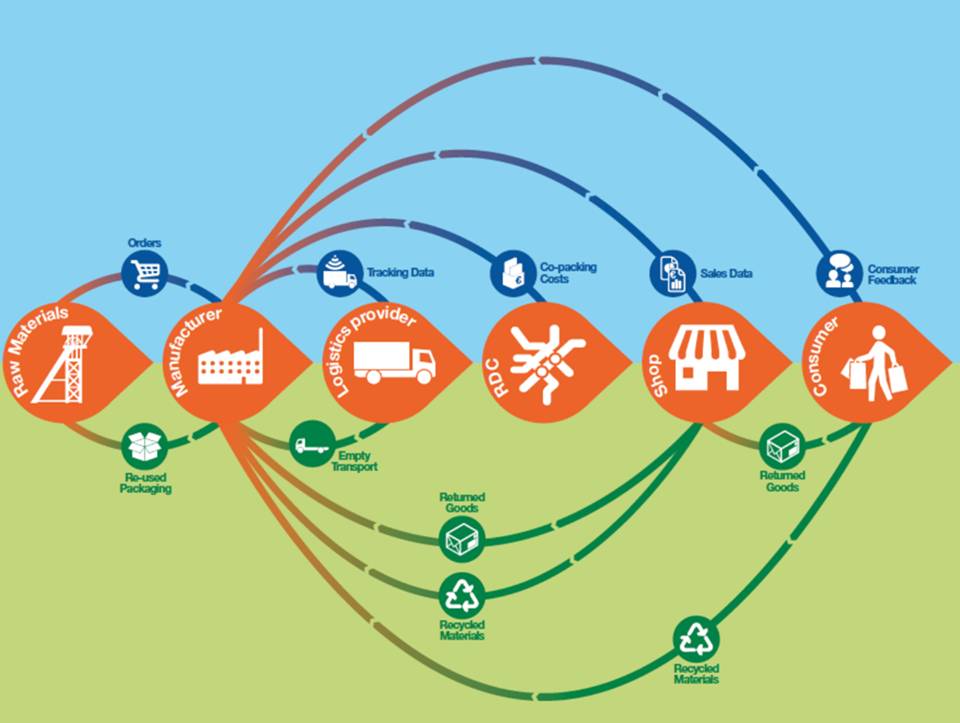We help our partners to grow
"Supply chain is history. The future is Supply Cycle", said Monika Červenák, who started her presentation with these words on Logistics Conference 2014.
Auditorium literally listened to several provoking thoughts that resonated even during lunch break. We introduce you the most interesting ideas.
Only when you begin to think in the cycle you will see the whole picture
World is changing. Packaging and logistics 10 years ago looked different as today. An increasing competitive environment, pressure on efficiency, decreasing costs, need of innovation, pressure to increase sales and profitability, have contributed to a radical change in the perception of service and ‚traditional‘ understanding of the supply chain.
Today’s customers are looking for a supplier, that is at the same time their strategic partner, who can not only meet their requirements, but also anticipate future and "lighten their load". Understanding customer needs on partnership level results in creating greater values with less effort (The Power Of Less). "Traditional supply chain is perceived as a straight line that has a beginning and an end. However, this represents only a part of the story. For everything that goes one way in the chain, something moves the other way also. For example, trucks often return empty, unused, ie. transporting air. Consumer goods go to shops, but their packaging has to be recycled. Damaged items are returned. The biggest challenges of a supply chain are actually circular, forming a closed loop. So it is only when you start thinking about the cycles involved, you start to see the whole picture", said M. Červenák. A good example from DS Smith is a cycle from design through its production, delivery to recycling after use. "(Un)common" corrugated box from the shelf after use, recycling and conversion to a new packaging can return to the same shelf within 2 weeks already!
Supply Cycle Thinking is the first precondition for a holistic approach to packaging and logistics. Another crucial connection are integrated packaging solutions. If you are still thinking in terms of ‘primary, secondary and tertiary packaging’ then you are overcomplicating your job. At DS Smith we believe there is only really one kind of packaging, the kind that works together. Can your on-shelf packaging be load bearing? Can your shelf-ready packaging pack be a display, and your display a pallet? The combination of different materials offers elegant industrial solutions.
Moment of truth zero
The moment, when consumer choses the product from shelf or clicking on "Add to cart" button. The moment of truth. We believe there are other critical 'moments of truth' that are often overlooked, which happen long before the shelf. The journey that a product makes from truck to shelf or assembly line, can be more risky and expensive than shipping it from China. Moreover, the famous‚ last mile is often a greater battleground as shelves itself with all aisle signs and in-store promotion. On the last mile are winning those graphical and ergonomical packaging solutions, that can be easily found, deployed, replenished by backroom workers. In this context the data on packaging are also very important. As important, as its content. "We make packaging simultaneously readable by million-euro robots and ordinary human beings, speeding it through the cycle and feeding back critical information about its journey" says M. Červenák.
Agile packaging in space and time
We believe, packaging should enable change, not restrict it. Packaging solutions should in an active and agile way increase and support efficiency of the Supply Cycle. So we create packaging systems that are flexible enough to deal with the future – whatever it turns out to be. Retailers and manufacturers are trying to cut the amount of space they need for inventory in the backroom by using Just-In-Time delivery. However, are category management and planograms, more important than systems in the backrooms? We have the knowledge and capabilities needed to help save huge costs by reducing the space needed for goods and machinery. Already while creating proposal for palletisation we take in account besides safety construction also the best space utilisation for pallets. This is a holistic approach and thinking in "just-in-space".
Production is moving from global to local. Supply chains are getting shorter; businesses are 'reshoring' their manufacturing capabilities, space and time. Hyperlocal view is the business model of the future. Besides time factor proximity to customers is coming to the fore, thus reducing the carbon footprint and reducing negative impacts on environment. "Almost 70% of our customers are local or national, and even for our multinational customers the main interaction happens on a local basis. This applies to new Technologies as well, that are almost always driven locally. Finally, the hyperlocal view decides" stated M. Červenák.
Supply Cycle Thinking
Outdated concept of the supply chain is full of underused assets. A supply cycle exploits them all. An integrated, holistic approach and thinking in terms of "The Power of Less" is showing results. It is not long ago, that DS Smith and one of Britain's largest multinational food and fashion retailers achieved zero waste through innovative packaging and reverse haul waste management solution. Companies must strive to understand the background from raw material to the consumer. Customer must be sure, that although he is working with just a few people, with a certain part of the organisation, there is always a whole team behind and the full know-how of the entire company.
M. Červenák continues: "We ask questions, looking for answers. We listen, where customer has a bottle neck, we think, we provoke standards that are 'cast in stone', our aim is to offer to our partners more efficient solutions that meet challenging requirements of rapidly changing world. We shift borders of the cooperation. Together we can grow faster than alone".
